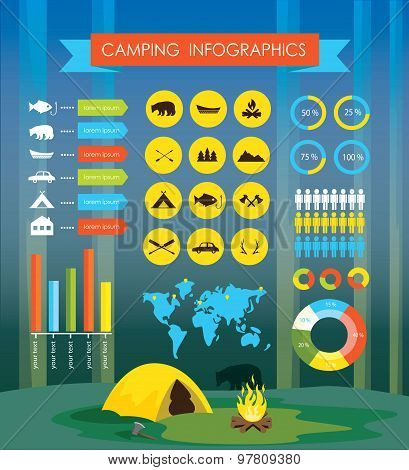Rainfall flies are an important accessory for wall surface outdoors tents. They raise the ability of a tent to safeguard campers from severe climate condition while giving added comfort and resilience.
Normal cleaning of a rainfall fly keeps mud, mold, and debris from ruining it. Also, making sure the proper stress of a rainfly stops it from sagging and permitting water to gather underneath.
Climate Resistant Products
The material used in building and construction jobs can impact the long life and longevity of the job. Picking weather-resistant materials helps in reducing upkeep costs and saves resources for future fixing and substitute.
Wood might not be the very first product that comes to mind when reviewing weather resistance, but it is highly long lasting when appropriately treated with chemicals. Cedar, redwood, and teak are instances of naturally rot-resistant woods made use of to make a selection of exterior furniture and structures.
High-performance canvas wall camping tents are made to resist wetness and maintain campers comfortable. It is very important to tidy canvas and camping tents regularly to get rid of dust, mud, and dirt. It is also necessary to rinse off any kind of residue from the canvas outdoor tents before keeping it away for use. Stay clear of utilizing bleach, as it damages the water-resistance therapy and makes the camping tent extra susceptible to leak. Conversely, a soft brush and a tube can be used to extensively scrub the canvas camping tent and wash it off with water till it is fully saturated.
UV Direct exposure
Unless a tent is made from UV-resistant material, extended direct exposure to sunshine will trigger it to break down. This holds true of all fabrics, but it's specifically pronounced for outdoors tents and canvas structures due to just how much they're made use of in outdoor settings. UV radiation can cause dyes to break down, causing a loss of shade vibrancy.
A rainfly secures wall surface tents from these hazardous UV rays by showing them prior to they can pass through the structure and reach your skin. It is essential to select a rainfly with a UPF score of 50 or higher to get optimal UV security.
A rainfly likewise helps regulate the temperature level inside an outdoor tents relying on the season. A lighter rainfly can maintain camping tents from taking in excessive warmth in the summer, while a heavier rain fly can help protect against heat from getting away the outdoor tents during colder months. In either case, these additional layers of insulation can considerably extend a tent's lifespan.
Dampness Damages
Canvas camping tents are relatively long lasting and can last 15-30 years with thorough care, but also one of the most high-performance canvas is not unsusceptible downpours. A rain fly or fly sheet adds a layer of defense for the roofing of your canvas camping tent and assists stop moisture damage.
Condensation, mold, and mold are not only unsightly, but they can additionally damage the architectural stability of your canvas outdoor tents. Stopping these problems is easy, yet it requires careful treatment and interest to information.
Make it a routine to inspect your tent in the morning and eliminate any kind of all-natural condensation, dew, or snow that has built up externally. Later, be sure to spread your tent out in an open area and use a soft brush to scrub away any mold and mildew and mold that has actually created. Once you have removed the impacted locations, re-treat the outdoor tents with a mold and mildew killer solution and rinse it thoroughly to prevent any type of future invasions.
Wetness Accumulation
While typical, condensation can damage products if left uncontrolled. The good news is, aggressive approaches like cleaning surface areas and airing out camping tents lessen condensation' effect.
Camping tent material, climate conditions and usage patterns contribute to condensation degrees. Sailcloth, as an example, stands up to water vapor dissipation and has a tendency to show beaded droplets more readily than polyester or nylon options. Comprehending this difference informs just how camping tent owners take care of condensation.
Resident's breathed out breath and wet apparel and devices spike humidity degrees. A lack of air flow approaches enables dampness to condense when warm indoor air satisfies cooler surface temperatures. This cycle enhances on moist nights or when an outdoor tents is positioned in reduced spots. Checking and wiping camping tent surface areas right away after cooling down motivates dampness to disperse prior to destructive materials wall tent or creating mold. Local air movement, such as directing a follower towards seams, more aids the process. Identifying the most prone locations of a camping tent, like high ridges and edges, helps campers improve their dampness management routines.
